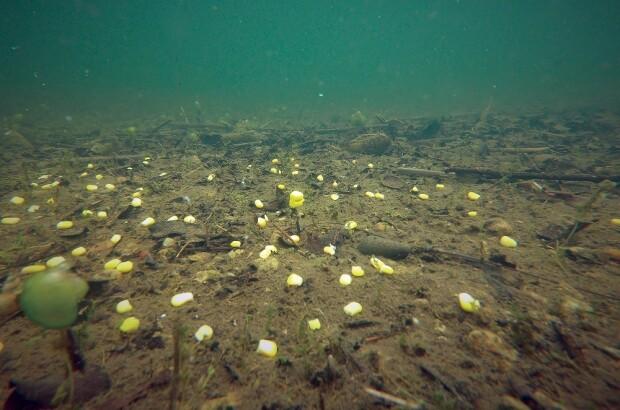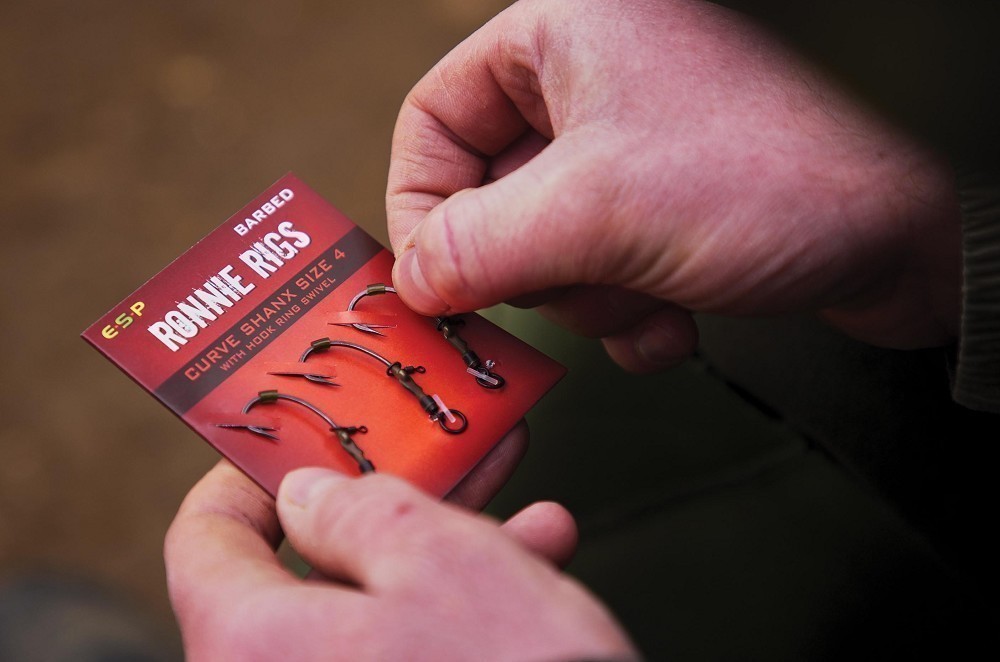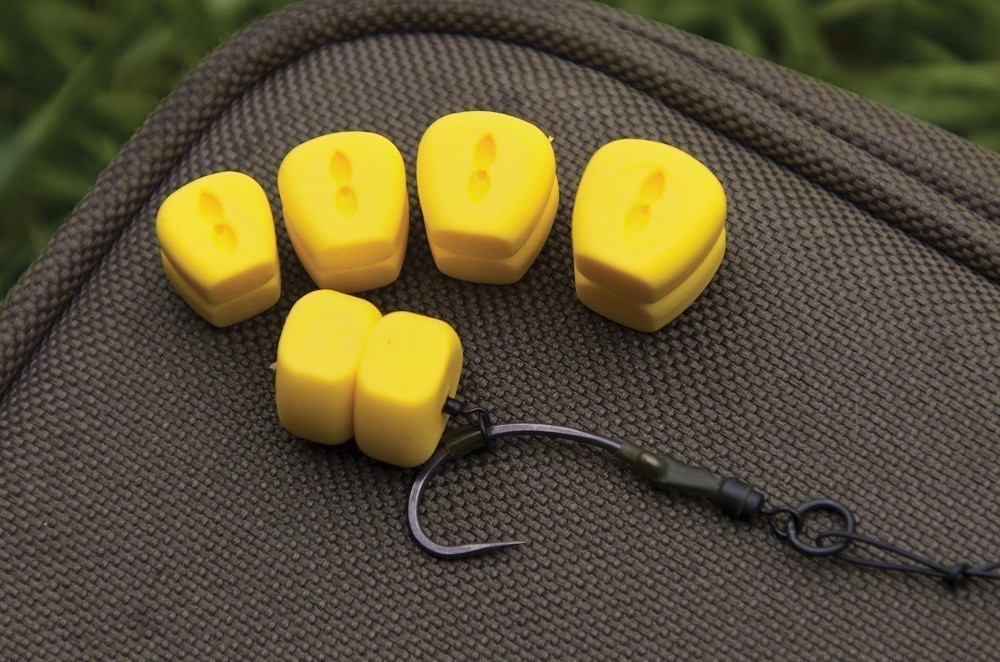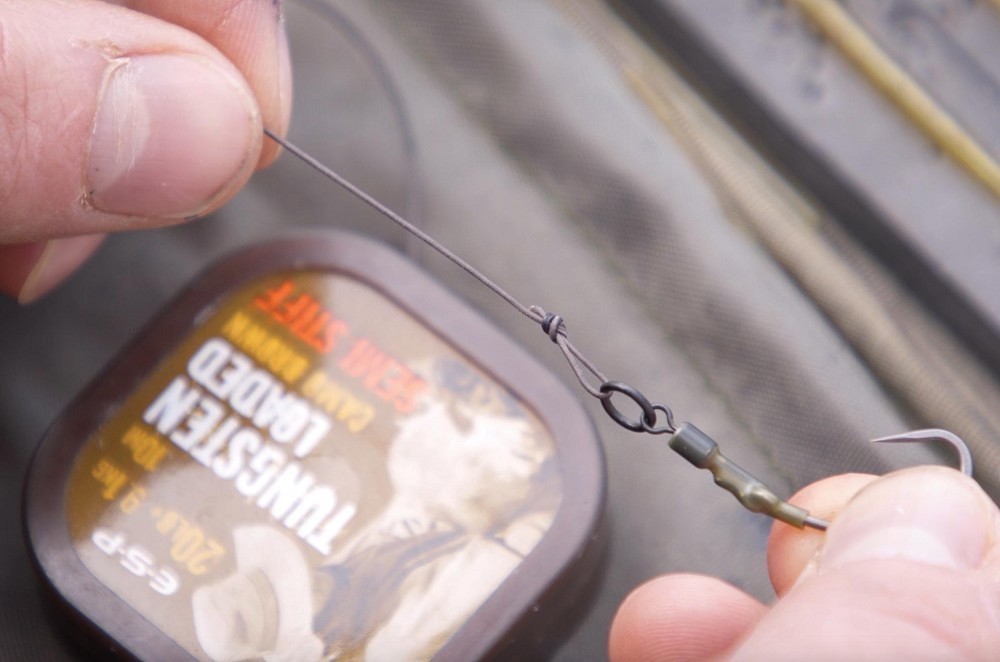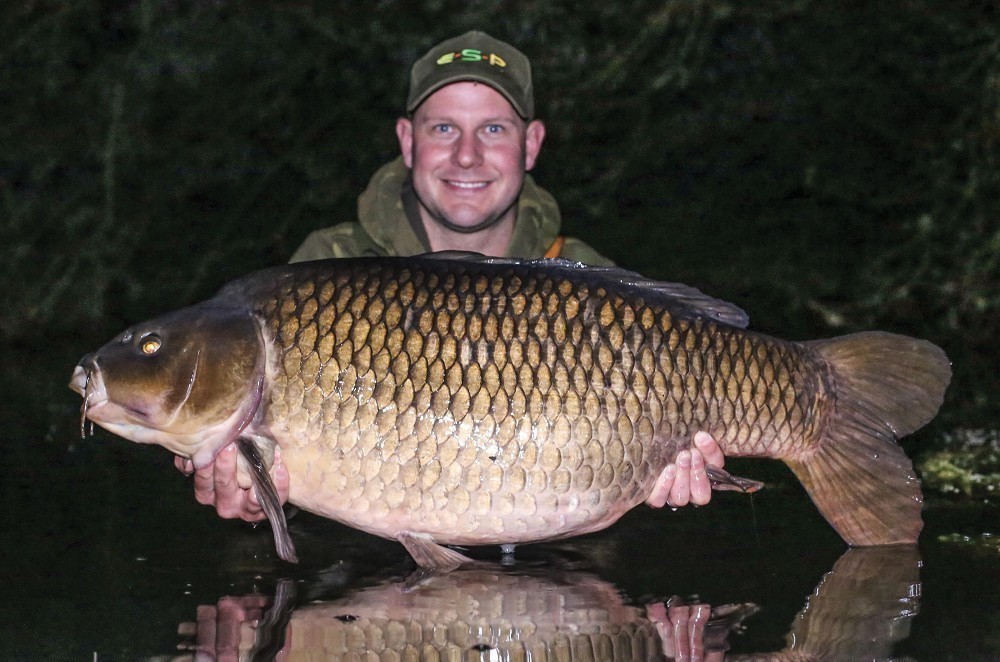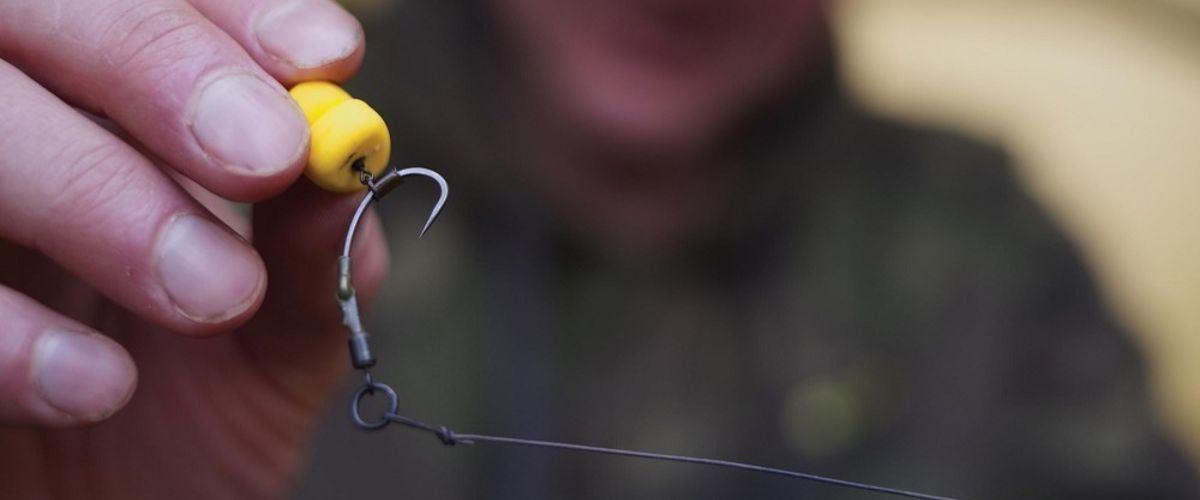
How Kev Hewitt ties his Ronnie Rigs
Kev's version of the Ronnie Rig...
In recent months I have been using the ready-made Ronnie Rigs from ESP as they are identical to how I was tying them up and all the components are the same. For that reason I have total trust in the ready-made version. Believe it or not, I have used ready-made rigs from ESP for years; before I started using the Ronnie I used to use the ready-tied Short Chod Rigs for my Hinged Stiff Rig.
An overview
I like to place my Shank Stop three-quarters of the way around the bend of the hook so that the pop-up sits directly above the hook which will naturally lean slightly forward. This always gives the hook an aggressive angle which allows the hook to turn and penetrate the bottom lip once sucked up. The ready-made rigs come already pre-tied with the tubing in the exact right place to achieve the correct presentation.
ESP produce a pack of mixed sizes of Artificial Buoyant Double Corn and the second largest sized corn in the pack balances perfectly with the size 6 ready-tied Ronnie Rig so that the hookbait slowly sinks without having to add any putty. I also use a 12mm Northern Special pop-up for a lot of my fishing and for this I also use a size 6 and just add a small amount of putty to the swivel to slowly sink the hookbait.
Hooklink length
As standard, I always use a Tungsten Loaded hooklength of around eight-inches when fishing on a clear, firm bottom. I attach the hooklink to the Ronnie Rig with a simple Overhand Loop Knot; I have always found the loop to be very strong and doesn’t strangle the braid nor strip the coating back when bedding the knot down. If it is silty I will add a couple of inches to the hooklength to allow for the fact that the lead may well plug into the silt.
If I were to be using the Ronnie Rig on a weedy area, if I couldn’t find a clear spot for instance, then I would gage the depth of the weed by dragging back a weed sample with a grappler lead. I will then tie a hooklength at least four- to six-inches longer than the length of the weed to ensure my lead hits the bottom and my hookbait comes to rest on top of the weed.
PVA bags
I used to always use PVA bags and would never cast a rig out without one - in fact, I’ve probably done that for a period of around seven years. However, in recent years I will always fish a Ronnie Rig over bait. Once a Ronnie is in position, it is near impossible to tangle and in the event that it does gets picked up and dropped by a fish, or even a bird, the rig will always reset itself and will be fishing 100%. Whereas with a PVA bag, once the presentation has been disturbed and the pellets are gone, the rig has lost its effectiveness. When PVA bagging I always recast more regularly whereas if I have a Ronnie out on the spot I am happy to leave it in situ for as long as I feel is needed to get a bite.
In general, I will always fish a Ronnie over bait but if I am casting to showing fish I will always use a PVA bag.
Lead arrangement
I use an Adjustable Lead Clip for all my Ronnie Rig fishing. If I am fishing a weedy or snaggy water I will cut the end of the lead clip back so there are less ribs under the tail rubber; this will ensure the lead is ejected every time. However, I don’t like to dump leads for the sake of it due to the cost, and more importantly, the potential long-term environmental impact. So to avoid dropping the lead unnecessarily I will use the Adjustable Lead Clip as it comes out of the pack and push the tail rubber fully on.
